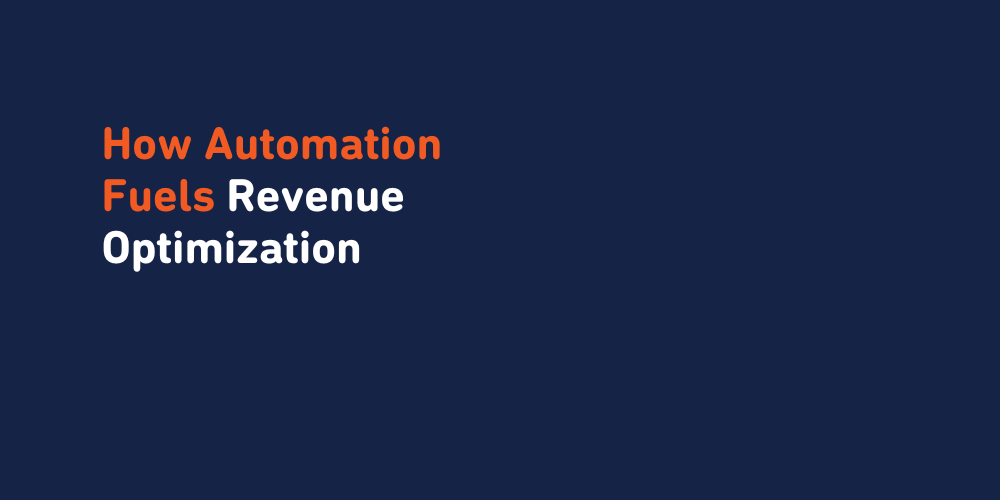If you’ve read our “The Current State of Revenue Optimization in Food & Beverage Industry” white paper, then you already know a bit about the challenges currently impacting the Consumer Packaged Goods (CPG) industry, and innovative opportunities for the way brands approach maximizing efficiency and profit growth strategy across the industry.
As a quick refresher, revenue optimization is the use of analytics to predict consumer behavior at the micro-market levels and optimize product availability and price to maximize revenue growth. Although typically associated with the hotel and airline industry, Revenue Optimization is incredibly important for CPG companies who want to maximize their results, understand their consumers, and make insightful forecasts for the future.
In recent years, some of the most successful brands in the world have turned their focus to revenue optimizationt. By optimizing your growth strategy, your company may see an increase in margins by up to 5%(1). But in the highly competitive consumer packaged goods industry for it to happen, you must rely on accurate, quick, and collaborative market data to make the right decisions and develop the best marketing plan. Unfortunately, without automation, this market data can be inaccurate, disjointed, and getting it is time-consuming.
So, how do you truly understand and use it to optimize your strategy?
The Challenges with Revenue Optimization
Revenue Optimization (RO) is multidisciplinary, meaning data is streaming in from a variety of departments and channels. At its center, RO looks to create a collaborative process between sales, finance, and marketing teams by producing more comprehensive coordination of business planning, maximizing results, and optimizing strategy forecasting.
To start, companies succeed by collecting, connecting, and analyzing data. You need to be able to effectively sort through what is significant and what is just background noise. When used correctly, this data will allow you to truly understand, predict, and optimize your profit strategy. But with 90% of all the data in the world created in just the two last years(2), no team can handle it all alone.
As this process is time-consuming and incredibly tedious, it’s not enough just for teams to collaborate. You need to have a quick and reliable process in place. If you’ve ever used Excel, you understand this problem well. Because Excel requires the manual entering, manipulating, and analyzing of data, generating reports, and applying this to your revenue strategy may take several days or months. Not to mention that it is error-prone, the unintentional addition or subtract of a 0 can drastically change your results which may end up having major negative impacts on profit and growth in the long run.
It’s also important to note, this data needs to prove or disprove your company’s initial predictions and assumptions surrounding your strategy. It’s not enough to go on intuition alone. Only using intuition or personal judgement for marketing planning and revenue optimization is a failure waiting to happen.
Luckily, your company’s predictions can be based on the data and insights you’ve collected and then tested. This means you can see how the market is reacting to your changes and what are the results for your company. Based on these results, you can continuously improve your strategy by coming up with new predictions and testing them repeatedly to build a solid data-based framework. This takes the guesswork and biases out of your decision making and leaves you with a more complete and clear understanding of your business strategy.
Artificial Intelligence and Automated Systems Can Help
Thankfully, with these challenges, come solutions. Through the introduction of automated systems and Artificial Intelligence (AI), companies have been able to process data more quickly and accurately than with the use of manual programs and intuition alone.
AI takes in large amounts of data and processes it to identify trends, predict common consumer insights and responses, and even interpret emotion and spoken language. Not to mention, most of this can be done very quickly, sometimes within a matter of seconds. This, in turn, allows companies to easily look through the results and find trends, patterns, and make predictions, which gives you opportunities to optimize price and promotions, develop new products, and target different consumers, leading to increase in profit. As mentioned, the consumer packaged goods industry depends on accurate and prompt market research. Luckily, through the combination of AI and the data collected and synchronized by automated systems, this has become possible. Another important step in this process is the partnership between these automated systems and humans. The largest improvements and biggest benefits can be seen when humans work alongside technology. The analysis means nothing without the marketer to capitalize on it. But, just as humans rely on Artificial Intelligence, the AI depends on the involvement of humans to manage the flow and assure the quality of the data being feed into its systems.
A prime example of this would be a platform like YouTube. Data engineers monitor the status of YouTube’s AI to makes sure consumers are seeing videos that are relevant for them and that they are likely to view in the future. Without this guidance, Artificial Intelligence may produce inaccurate predictions and results.
If you want to seamlessly implement an automated system powered by powerful AI technology, then take a look at ScanmarQED’s marketing mix modeling platform.
Pricing and Promotion Equal Revenue Growth
As companies begin implementing automated systems and structuring market strategies around their collected data, they can begin utilizing these insights in more specific ways. As two-thirds of revenue growth in Consumer Packaged Goods companies comes from marketing mix(3), with the most impactful one being pricing, companies must look to price optimization and timely promotions to drive maximum results.
With the prevalence of online shopping, consumers have become accustomed to easy price comparisons and frequent promotions. But, it’s important to remember that your company’s promotions must be based on the insights from the data you’ve collected, and not intuition or gut feeling.
It is estimated that companies in the consumer packaged goods industry spend between 15 and 25 percent of net sales on promotions(4), but they fail to capitalize on insights to ensure that their strategies are leading to an increased return on investment (ROI). Again, by using an automated system you can more comprehensively anticipate trends in the market, capture competitor insights, and understand factors that most contribute to revenue growth.

One of the most impressive examples of a company leveraging data is that of Coca Cola. Their “Share a Coke” campaign, which replaced the Coca Cola logo with the most popular millennial names, resulted in a rise in sales for the first time in 10 years(5). Coke used its advanced analytics and big data to understand the market and develop a consumer-focused campaign. They were able to optimize their category planning and make informed decisions across their supply chain. This type of growth is only possible when companies effectively capture and utilize their available data. Without it, you are in a dark or squashed under a massive amount of unsorted data.
In closing, revenue optimization may not be fully understood by the consumer package goods industry, but many companies are coming around to the strategy. Although collecting and applying data insights can be difficult for humans, automation can help in that and make a significant impact on a company’s revenue growth.
Learn More About Revenue Optimization
If you want to take a more in-depth look at the evolution of revenue optimization, the challenges surrounding traditional marketing strategies, and the paradigm shift in the consumer goods industry, you can download our Revenue Optimization for CPG Brands white paper.


-1.png)